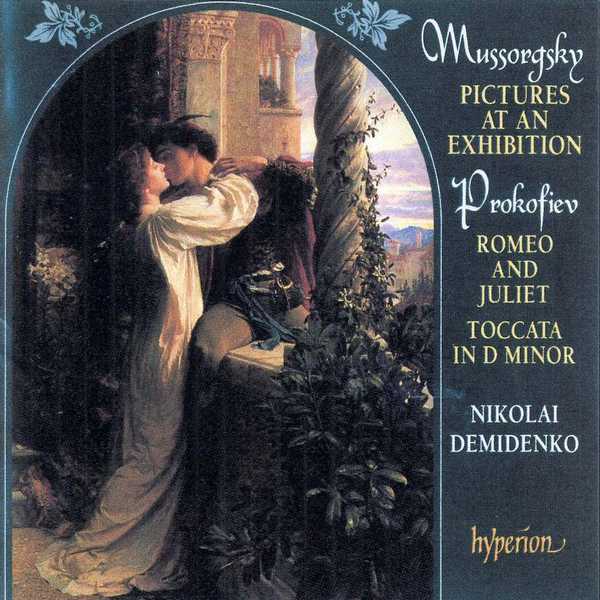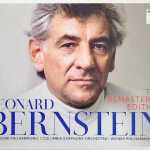
Composer: Modest Mussorgsky, Sergey Prokofiev
Performer: Nikolai Demidenko
Format: FLAC (tracks)
Label: Hyperion
Catalogue: CDA67018
Release: 1997
Size: 110 MB
Recovery: +3%
Scan: cover
Mussorgsky: Pictures at an Exhibition
01. I. Promenade 1
02. II: No 1. Gnomus
03. III. Promenade 2
04. IV: No 2. The Old Castle (Il vecchio castello)
05. V. Promenade 3
06. VI: No 3. Tuileries. Children quarrelling after play
07. VII: No 4. Bydło (A Polish Ox-cart)
08. VIII. Promenade 4
09. IX: No 5. Ballet of the unhatched chicks
10. X: No 6. Two Polish Jews, one rich, the other poor (Samuel Goldenberg and Schmuyle)
11. XI. Promenade 5
12. XII: No 7. Limoges, the market place
13. XII: No 8a. Catacombae. Sepulchrum Romanum
14. XIV: No 8b. Con mortuis in lingua mortua
15. XV: No 9. Baba Yaga (The hut on fowl’s legs)
16. XVI: No 10. The Great Gate of Kiev
Prokofiev: Ten Pieces from Romeo and Juliet, Op. 75
17. I. National dance
18. II. Scena (The street wakens)
19. III. Minuet (The arrival of the guests)
20. IV. Juliet as a young girl
21. V. Masks
22. VI. Montagues and Capulets
23. VII. Friar Laurence
24. VIII. Mercutio
25. IX. Dance of the girls with the lilies
26. X. Romeo and Juliet before parting
27. Prokofiev: Toccata in D minor, Op. 11
Musorgsky’s musical tribute to the painter and architect Viktor Hartmann has become his most familiar work, and this recording presents the original piano version of Pictures at an Exhibition. It is an extraordinary work, combining intense demands for virtuoso technique with an inexorable momentum which keeps what is fundamentally an impressionistic work in many movements moving towards its grand climax with the ‘Great Gate of Kiev’ finale.
Prokofiev is one of those composers who would constantly reuse material from one work in another. However, although the Ten Pieces from Romeo and Juliet may seem at first glance to be merely a medley gleaned from the more famous ballet, it should not be forgotten that Prokofiev published the set independently and that it was first performed the year before the finished ballet, perhaps by way of an advertisement for the more challenging (financially, at least) work to follow. Also included here is Prokofiev’s Toccata, written in 1912 while he was at the St Petersburg Conservatoire. The work was possibly conceived as a movement of the Second Piano Sonata, but Prokofiev evidently decided the work was worthy of publication in its own right.



